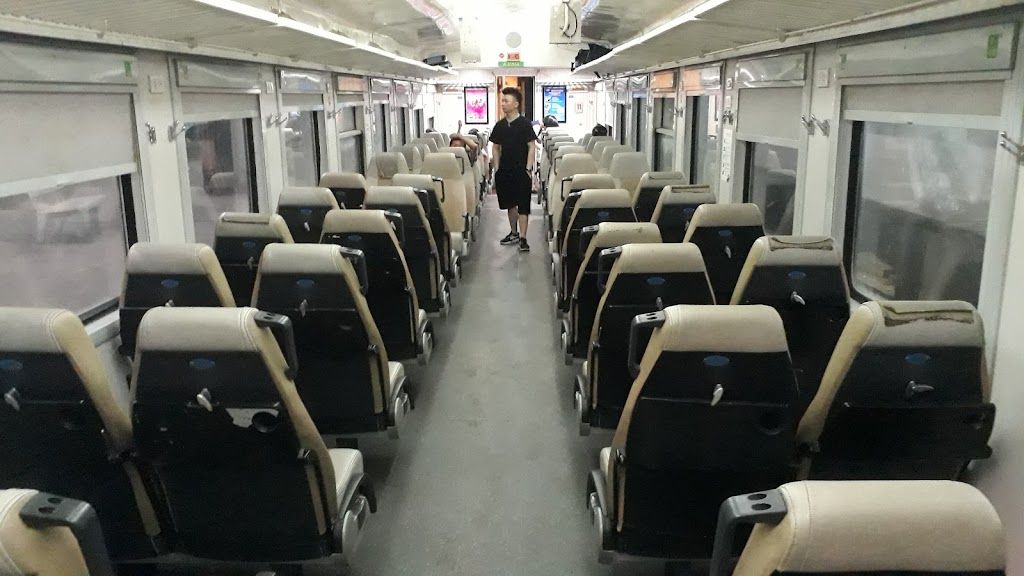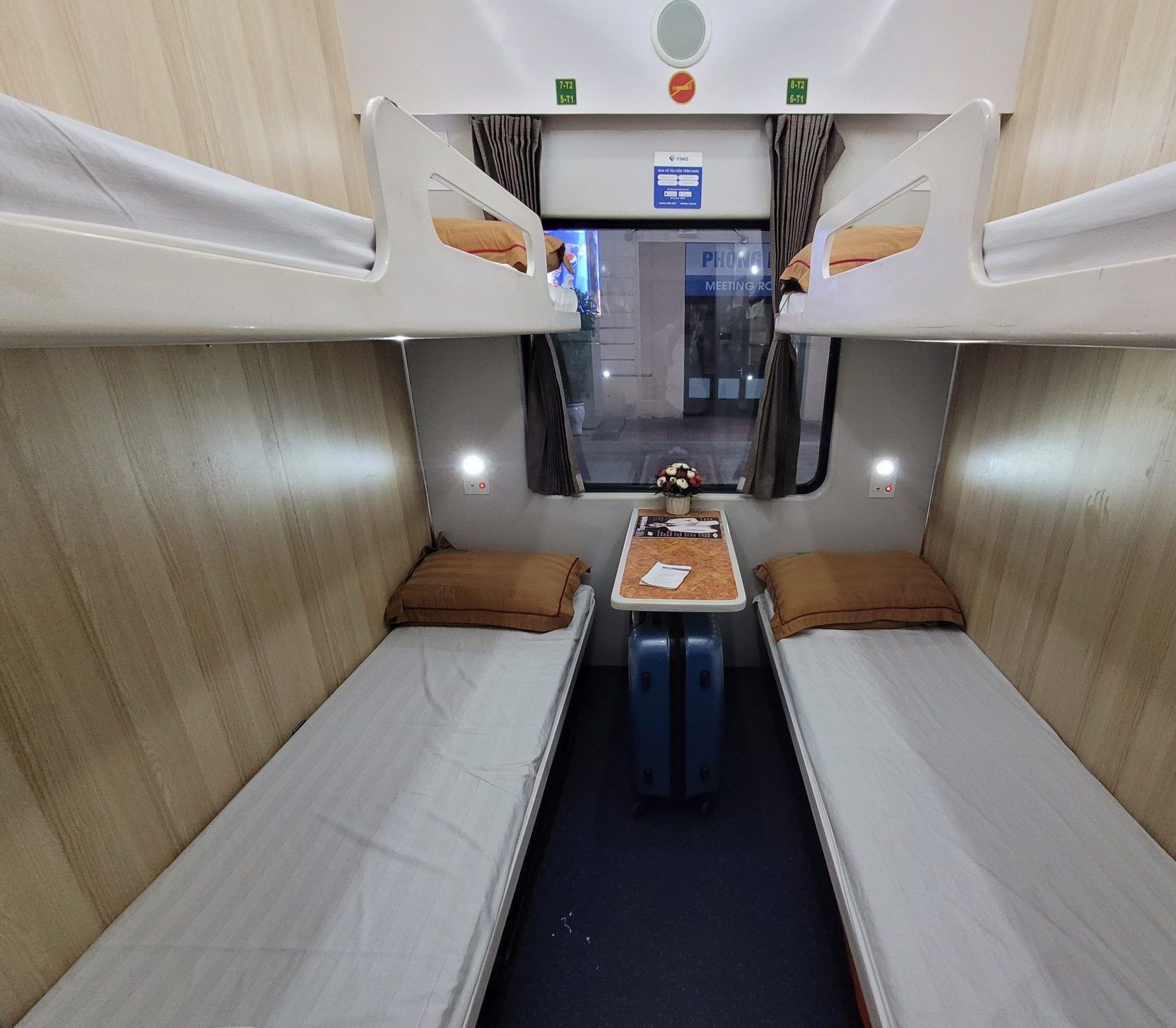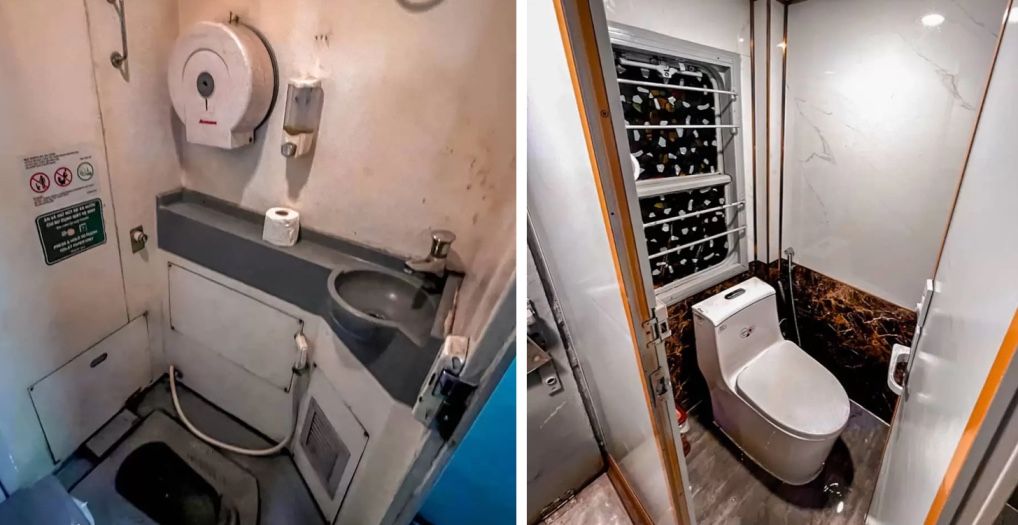Vietnam Sleeper Train Experience (Hanoi to Ho Chi Minh City)
Why choose a sleeper train? Flying saves time, and overnight buses cost less. However, the idea of a train journey through Vietnam, from Hanoi to Ho Chi Minh City, might be something with the experience.
I had a fantastic time on Vietnam’s sleeper train from Hanoi, and here’s what to expect if you’re planning the same adventure.
So, here’s everything you need to know about Vietnam sleeper trains. Get ready for an unforgettable ride!
Destinations on Vietnam’s Sleeper Train Route
Vietnam’s sleeper trains run along the Reunification Express railway, covering the entire north-to-south route between Hanoi and Ho Chi Minh City. Along the way, they stop at several key destinations, making it a great option for travelers who want to explore Vietnam at a slower pace.
The journey between these two bustling cities takes nearly two days, around 35–37 hours. This overnight journey ranks among the world’s most incredible train experiences.

Where to buy the tickets?
Let’s talk about booking tickets before boarding the sleeper train. Unlike in Europe, buying a train ticket in Vietnam seems a bit more complicated. For sleeper trains, booking early is advised, especially if you are traveling during the big holidays, such as the Vietnam’s Lunar New Year (between Jan to Feb)
Online tickets
There are a dozens of third parties selling train tickets online, however, if you are already in Vietnam, you can check it out directly at train station, or buy it through your hotel, guest-houses and or small travel desk around the town.
Directly from the Train Station
In Hanoi, head straight to the train station (~3km from the old quarter), to buy your ticket. Remember to take your original passport, as it’s required for booking. Hanoi Train Station has English-speaking staff at the ticket counter.

Hanoi – Ho Chi Minh City Train ticket price
Train ticket prices from Hanoi to Ho Chi Minh City vary based on the seat or sleeper option you choose. The departure time form Hanoi is around 19.25.
Soft seat: $65
Top bed on 6 bed cabin: $68.09
Middle Bed: $75.52
Lower Bed: $79.22
Hard Seats
Hard seats are exactly what the name suggests—wooden benches without armrests and fixed backs. Some carriages lack air conditioning, making these the most affordable option. Since sleeping on such benches sounds nearly impossible, they aren’t available on sleeper trains. For shorter trips, like Hanoi to Ninh Binh, hard seats remain an option.

Soft Seats
Soft seats are not bad at all, these seats recline but don’t go fully flat, making them less ideal for sleeping. Found in the front carriages, they’re the most affordable option on a sleeper train.
In the other hand, soft seats work best for short trips or daytime travel. They’re great for watching the scenery on a day train or saving money if you’re a budget backpacker cutting accommodation costs. But unless you can sleep anywhere, spending the night in one won’t be the most comfortable experience.

Hard Sleeper (3rd Class Sleeper)
A hard sleeper offers a step up from soft seats, providing six soft beds in a shared cabin. Unlike hard seats with wooden benches, this option lets you lie flat for the entire journey.
Soft Sleeper (2nd Class Sleeper)
Soft sleepers come with four bunks in a cabin. Compared to hard sleepers, this setup offers more privacy—especially for couples, as you’ll only share the space with two other travelers. With fewer beds, there’s also extra room to store baggage, making it a more comfortable choice.
Upper bunks cost about 100k VND (4USD) less than lower ones due to the added inconvenience.
Sleeping on the upper bunk offers more privacy since it’s above eye level, a safer spot for belongings on the space above the cabin door or corridor, and no risk of others sitting or stepping on your bed.
However, lower bunk passengers can sit up anytime, while those on the upper bunk have no choice but today down due to the less space to the roof of the train.
It costs less than a four-berth cabin but comes with trade-offs—limited space, less privacy, and not enough room to sit up comfortably. Storage for baggage is also tighter compared to the four-bed option.

Private 2-bed cabin (1st Class Sleeper)
A private two-bed cabin offers the most premium experience on the train. Ideal for couples or anyone seeking complete privacy, it comes with just two beds in the cabin. These cabins are rare, with a maximum of two per train, and not every overnight service includes them.
Premium Soft Sleeper
Private operators like Laman Express, Violette Express, and Lotus Train run some carriages, offering upgraded cabins in either two-bed or four-bed configurations.
These cabins come with premium furnishings, complimentary drinks and snacks, better bedding, and sometimes a fresher look with stylish curtains or artwork.
For the same Hanoi to Da Nang journey on SE1, a bunk in one of these luxury sleepers can cost around 500k dong more than a standard option.
What to Expect on a Sleeper Train
The Cabins
A typical sleeper cabin comes with neatly prepared beds in brown and white linens, along with a pillow and a folded duvet. Passengers boarding in Hanoi or Ho Chi Minh City will find freshly made beds, but those joining midway might not get the same experience.
A small dustbin is under the table, while each bed includes a USB charging port and a reading light. The cabin’s only power socket is also located beneath the table. A switch near the door controls the central light.
Each bed features a knob with three hooks for hanging clothes, towels, or handkerchiefs. For added security, the door locks from the inside.
Corridor
Each carriage contains seven cabins connected by a shared corridor. At the corridor’s end, a water dispenser offers both hot and cold water, along with a toilet—either a squat-style or a standard toilet bowl.
The Toilets
Each carriage has two toilets—one squat-style and one with a toilet bowl, common on trains in Asia.
From my own experience on sleeper trains, toilets often end up less than ideal. I always make a stop at the restroom before boarding and avoid drinking too much water to limit going to the toilet during the train trip.
Before departure, the squat toilet in our carriage looked reasonably clean. But within an hour or two, it wasn’t the same anymore and by the time we reached our stop, a strong odor of urine and the restroom lingered in the corridor.
Foods
A train attendant regularly moves through the corridor with a snack trolley with coffee, noodle and other easy to eat foods. Make sure to have cash to pay as they won’t accept credit card unless you have a local Vietnamese card or equivalent to pay them online using your local bank.
Getting to the Hanoi Train Station
The Hanoi railway station isn’t that far from the old quarter (where most of tourist stay). You can take a taxi, or order a grab (similar to uber), make sure to present at the train station an hour to so before the departure time. If you’re staying in the Old Quarter, the trip typically takes 15–30 minutes, depending on traffic. You can pay in cash and it won’t be more than 100k VND (4 USD).
FAQ: Sleeper Train in Vietnam
The reunification trains stay relatively clean—except for the toilets, which are about the same standard as those on European sleeper trains.
Fresh linens are provided for passengers boarding in Hanoi or Ho Chi Minh City, but if you’re joining mid-route, cleanliness isn’t always guaranteed.
For extra peace of mind, bring a lightweight liner in case the bedding doesn’t feel as fresh as you’d like.
Did I sleep well on the train from Hanoi to Ho Chi Minh City? It was decent, though nothing like resting in a proper bed. Light sleepers might find the screeching stops and engine sounds disruptive, so packing earplugs is a good idea.
Personally, I found the gentle rocking of the train surprisingly soothing. Unlike the blogs some travelers describe, the motion felt smooth enough to let me sleep in moderate comfort. Our upper-bunk passengers, who boarded in Thanh Hoa city, stayed quiet through the night, making the experience even more comfortable.
Lower bunk passengers can store luggage under the bed or table. Upper bunk travelers have space above the cabin door.
When I had a top bunk, I kept my backpack and shoes there for security. However, hauling large luggage up isn’t practical. Locking it and placing it under the lower bunk is the best option.
The trains are pretty safe. If you are a solo female traveling on your own, an upper bunk might be the better choice in case of odd cabin mates. If anything feels off, speak to the train conductor about switching cabins. Also, ensure the door isn’t locked from the outside at any time. Check out: Is Vietnam safe for solo female travelers

